
Why have teams restructured? The top three reasons are all around the experience of teams and their stakeholders:
Becoming More Strategic: Easier for Mid-Sized Teams
Continuing the theme of strategic empowerment from the Q2 Report, 34% of the Q3 Creative Operations Report’s respondents reorganized. They did so to better engage with their stakeholders on a strategic level. However, large (21+) and small (1-5) teams showed the lowest strategic engagement, with large teams spending less than 4% of their time on strategic work. Mid-size (6-20) teams, in contrast, spend between 19% and 24% of their time in strategic services.
Small teams, of course, often start as in-house studios that focus on production. With large teams, it’s worth asking if they miss opportunities for further strategic engagement.
The Result: Acceleration, Quality, and Collaboration
If experience was the biggest reason for a planned restructuring, efficiency was the biggest result. With 37% of teams reporting that their ability to deliver work more rapidly, it was the top outcome. 19% of teams said the ability to improve their output has improved the most. At the same time, 12% found the biggest benefit to be improved collaboration.
Perhaps you’ve recently restructured and want to understand how your experience compares to that of your peers. Perhaps you have not, and you just want understand why others are doing it. Indeed, the reasons they gave for restructuring are success and improved strategic contribution.
Either way, we hope this report is useful to you, and we will continue to research the market and share our findings.
Team Changes
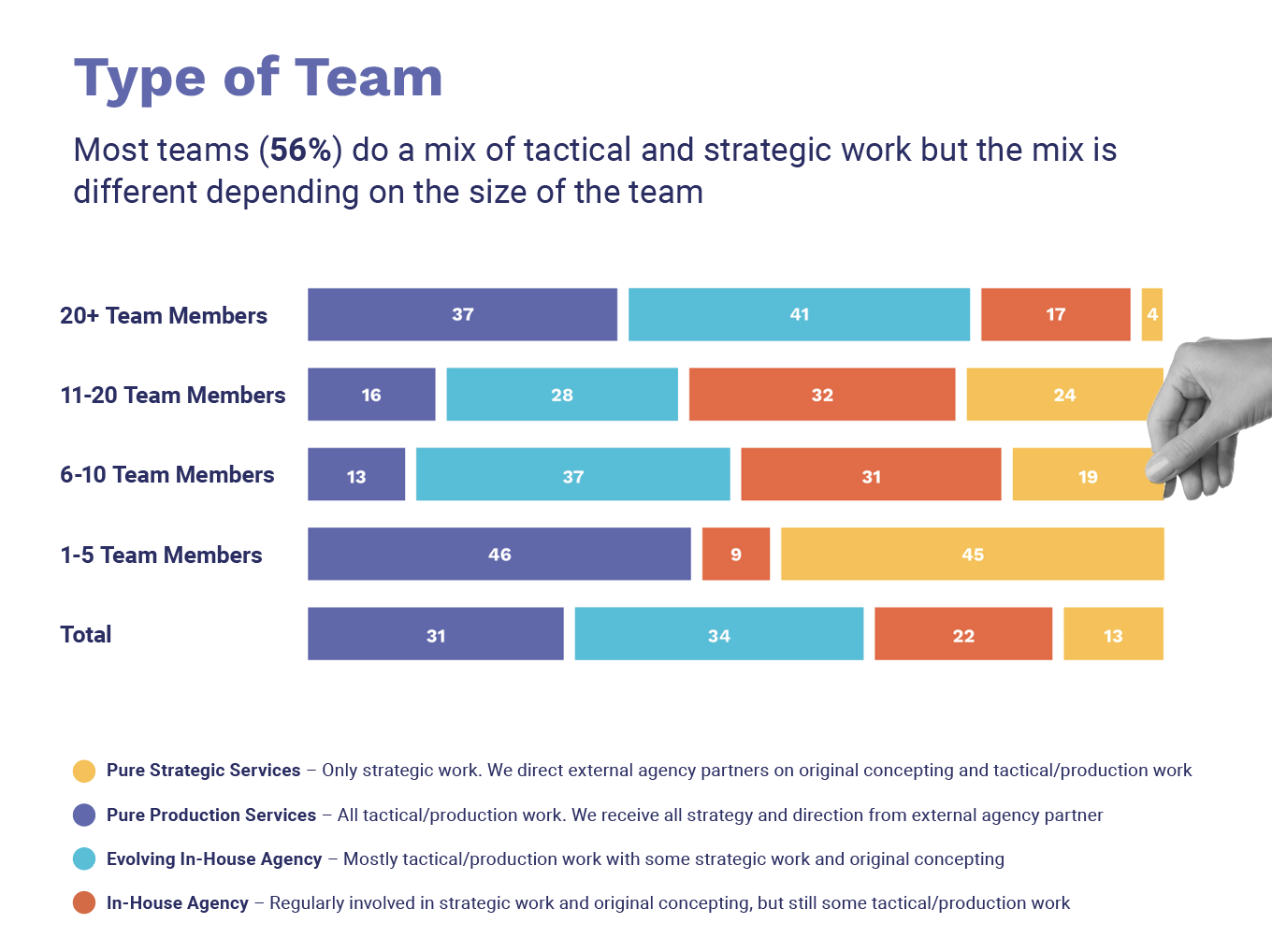
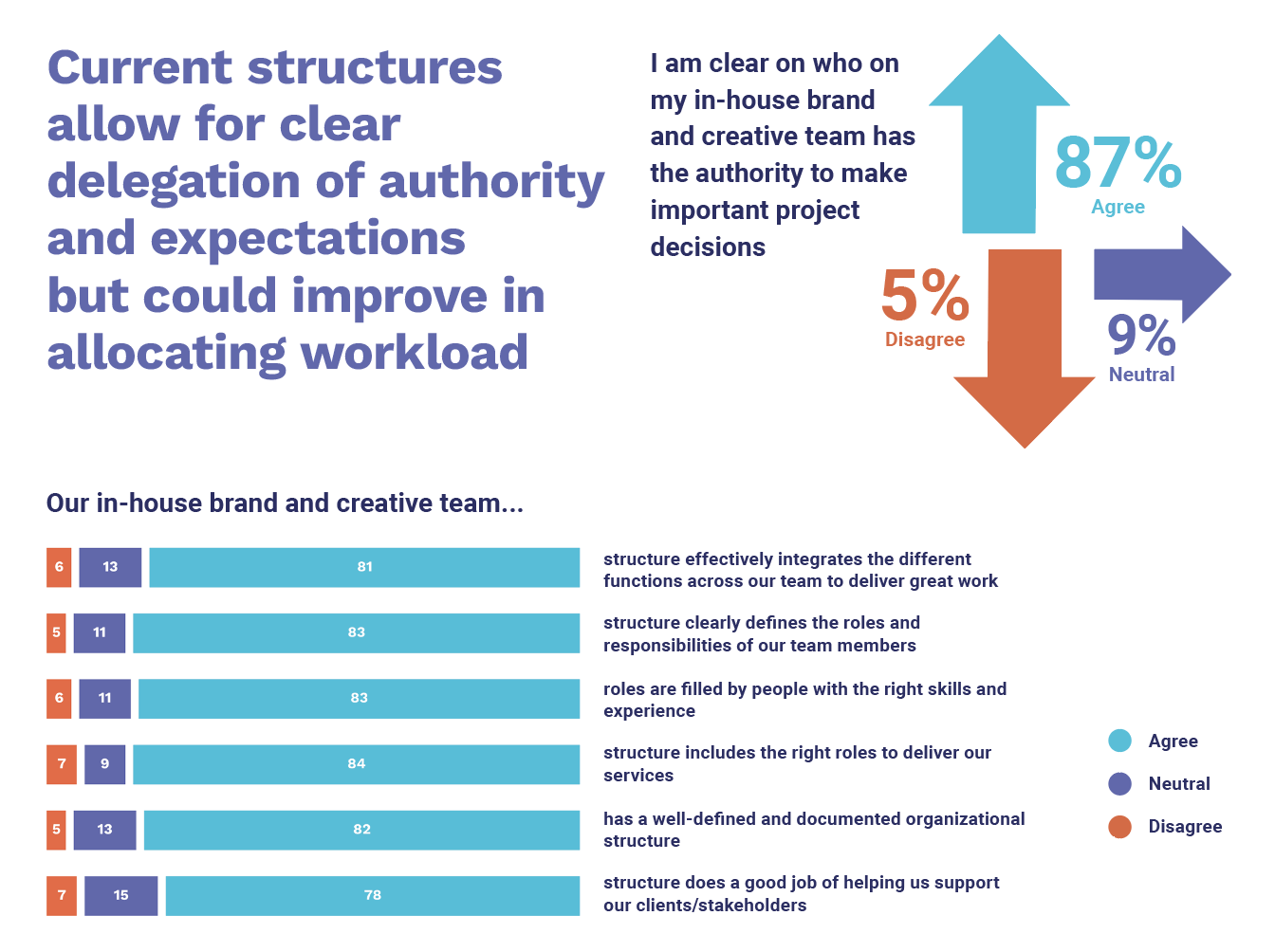
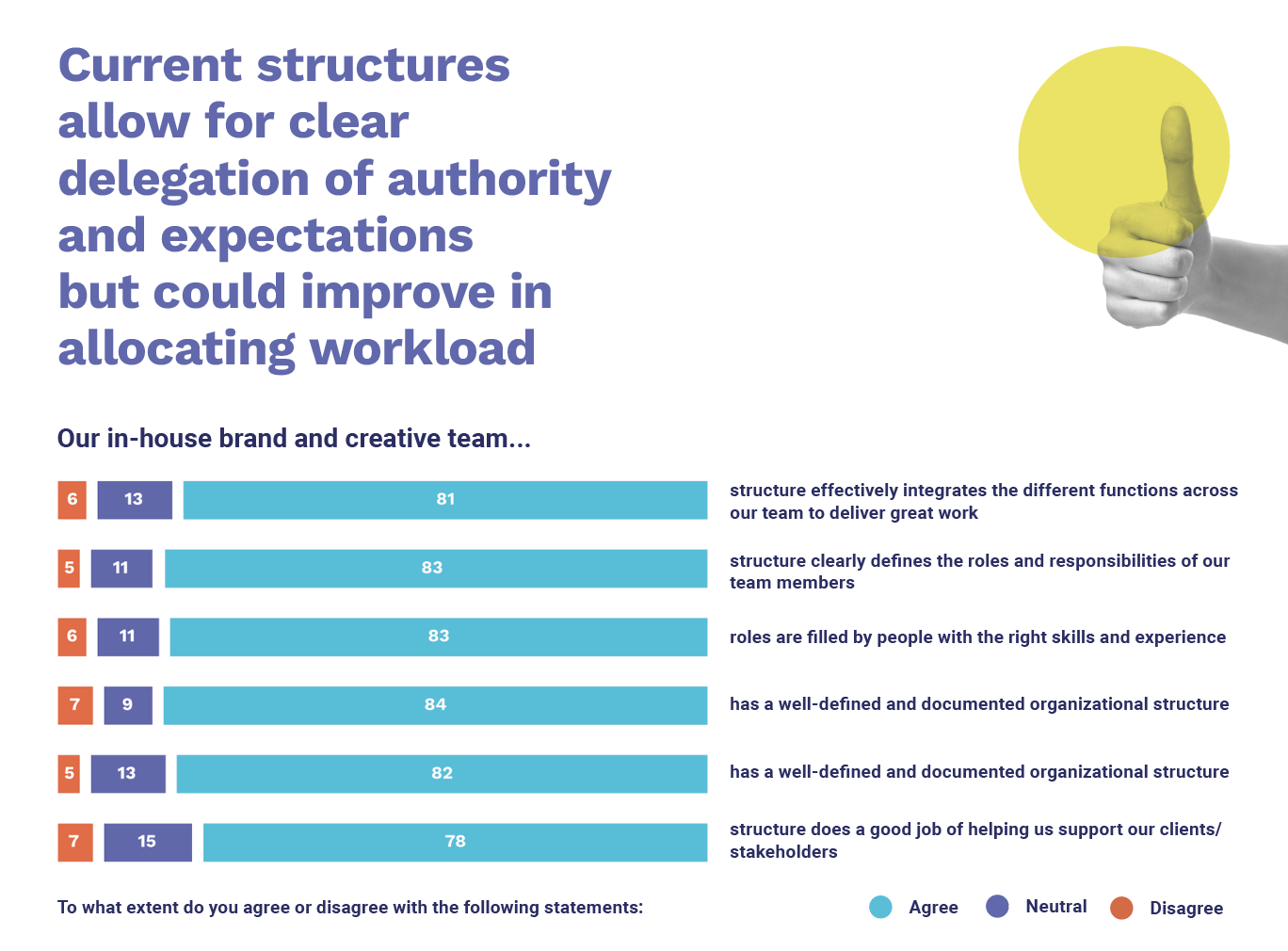
2022 Q3 Creative Operations Report: Challenging Times Bring Changing Models
Peter started at Children’s by taking an already-strong project management approach and optimizing it. A team of project managers routed the work to the right resources across the channels in the organization. And he had locked down permissions across the team.
“We didn’t want an account person to go in and change dates or anything like that,” says Peter, “so it was a pretty old-school project management-based model.”
What neither Peter nor anyone else had foreseen was the COVID-19 pandemic. Healthcare, even more so than other industries, had significant challenges to face. Non-essential functions like marketing struggled a lot. “Just about every health care organization went through a workforce reduction,” observed Peter, “and so of course we did.”
Although Peter knew the effectiveness of the existing model, he was now understaffed. He worked to empower the channels by giving them both independence and training. Additionally, he gave the marketing leads from the various teams more flexibility.
“Everybody got project manager credentials to accept projects, set up templates, set dates, and more,” explains Peter.
The Right Prescription for Long-Term Health
The team began staffing up as the environment became stable. Peter’s initial vision was that of going back to a project management model. However, the department leadership saw an opportunity for marketing leads to function like account managers. Peter was open to the change, but knew that the processes, systems, and people would need to operate differently.
“For that work,” says Peter, “You need a really strong kind of triage. The intake process has to be strong, and you need to function like a traffic team when the work comes in.” Centralize the work together, and allow for better brand and message consistency across channels.
Leading the Team Through Change
The marketing leads voiced their concerns over the volume of incoming work. Peter clarified that they were not accountable for managing every project. “It’s not your job to do everything or route everything,” Peter reminded them. The channels should execute most work on their own. And “it’s your job to be the person who has visibility to all of the work happening in support of your accounts.”
The teams soon found the new process empowering rather than overwhelming. “Our leadership focuses on our work aligning strategically to the organization,” Peter explains. “Team members are now in a position to see how their work ties to that strategy, and they get excited about the ability to flex their strategic muscles.”
To read Peter’s full story, download the full report
Team Restructuring
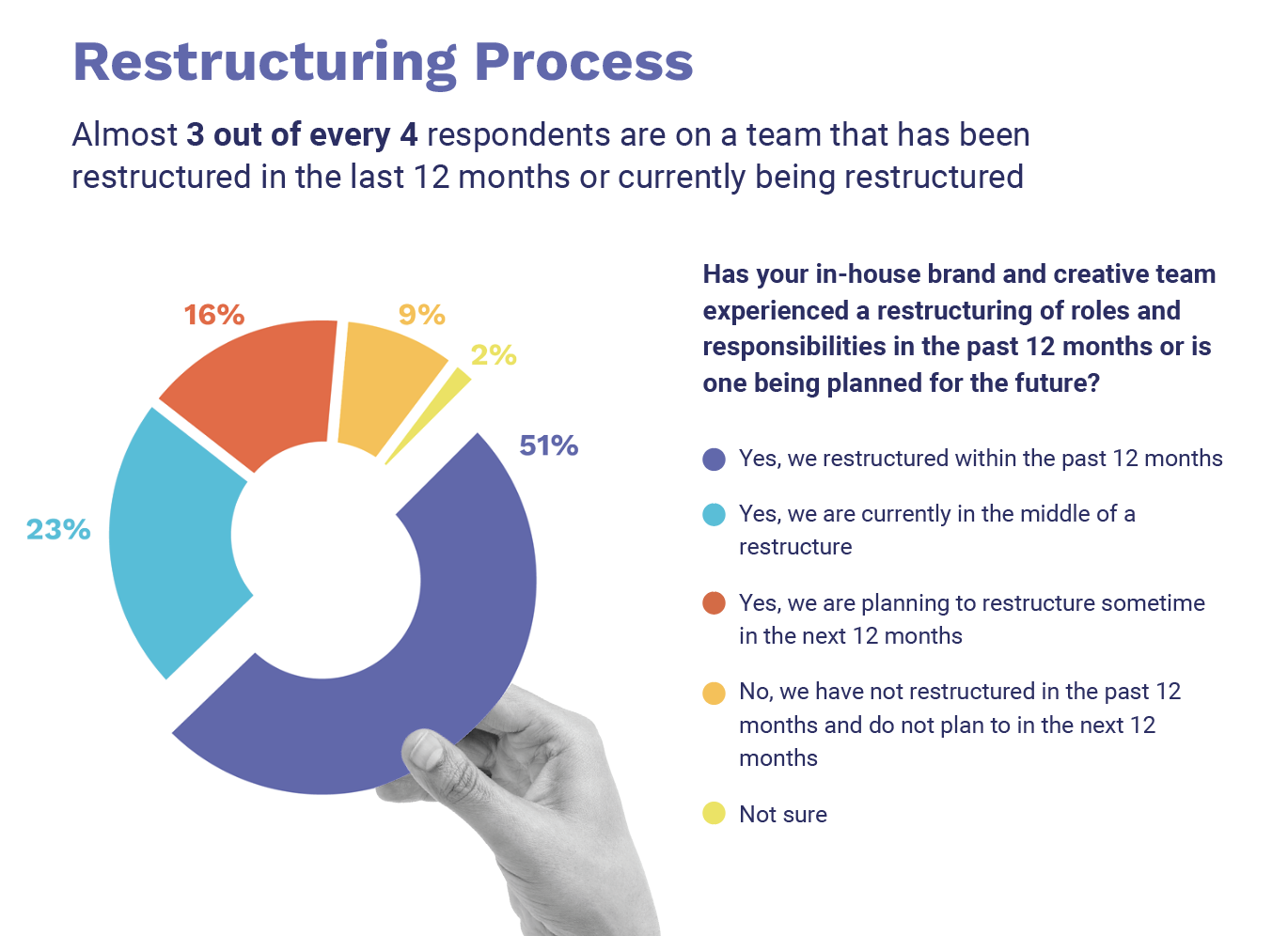
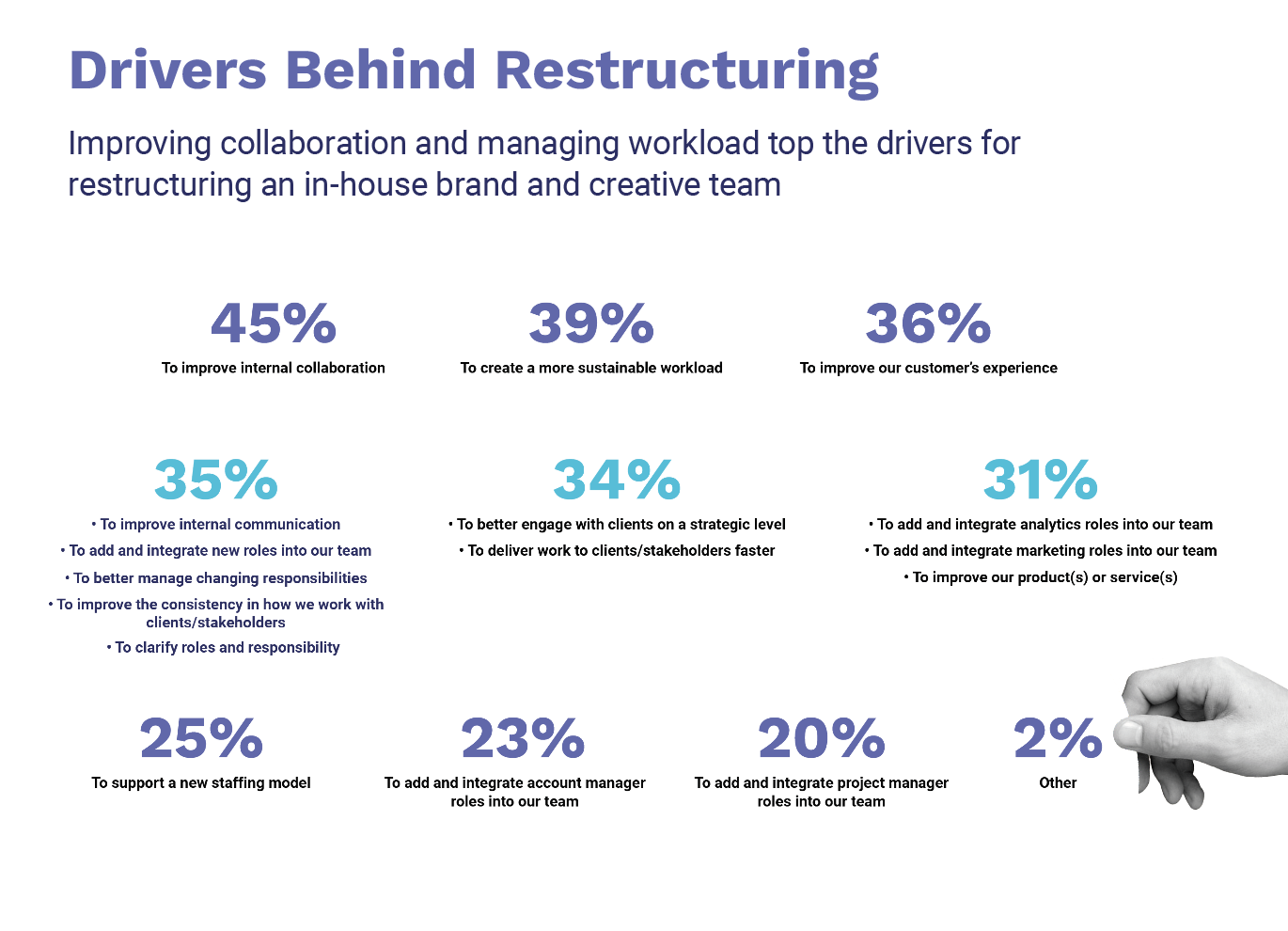
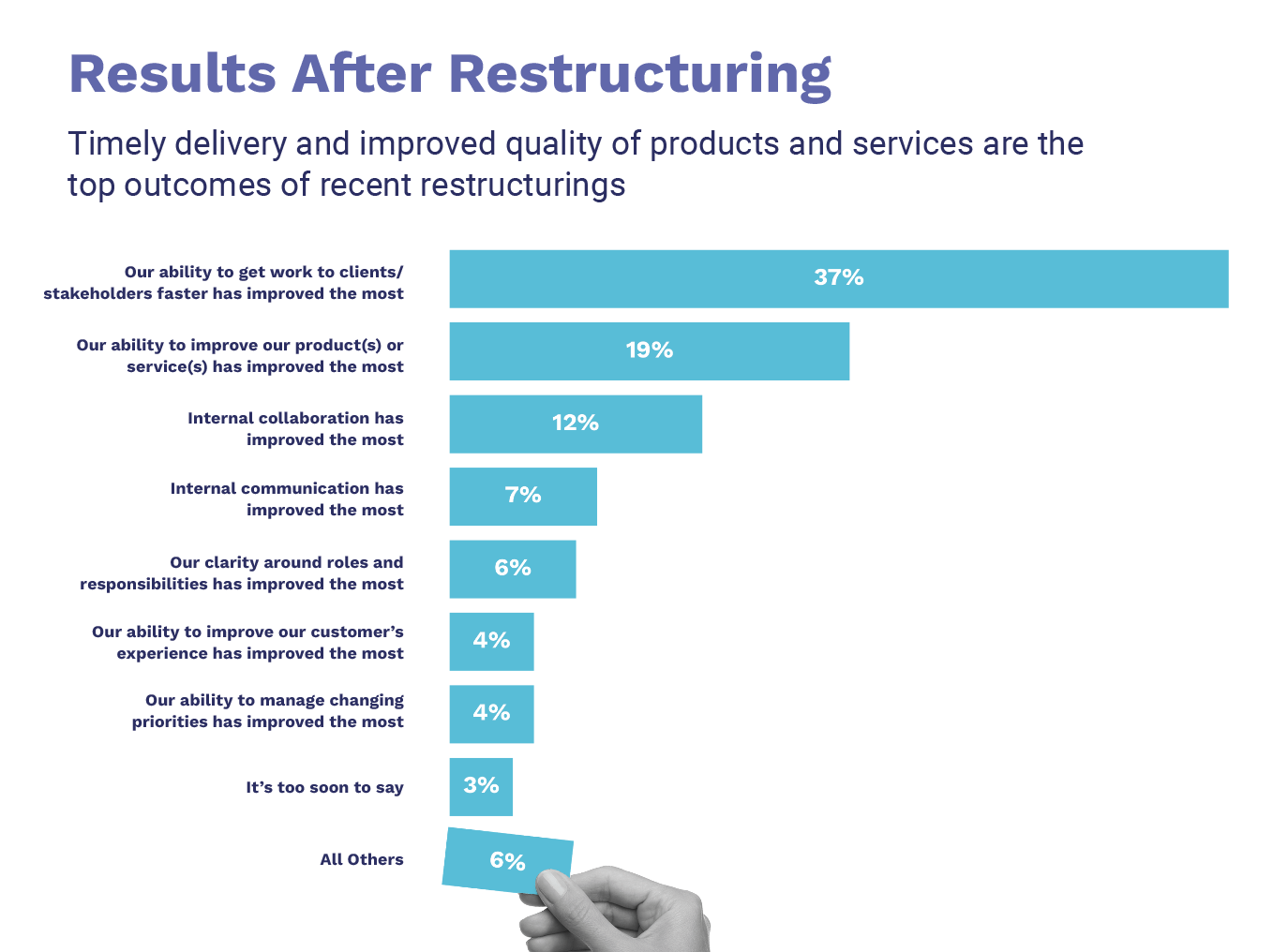
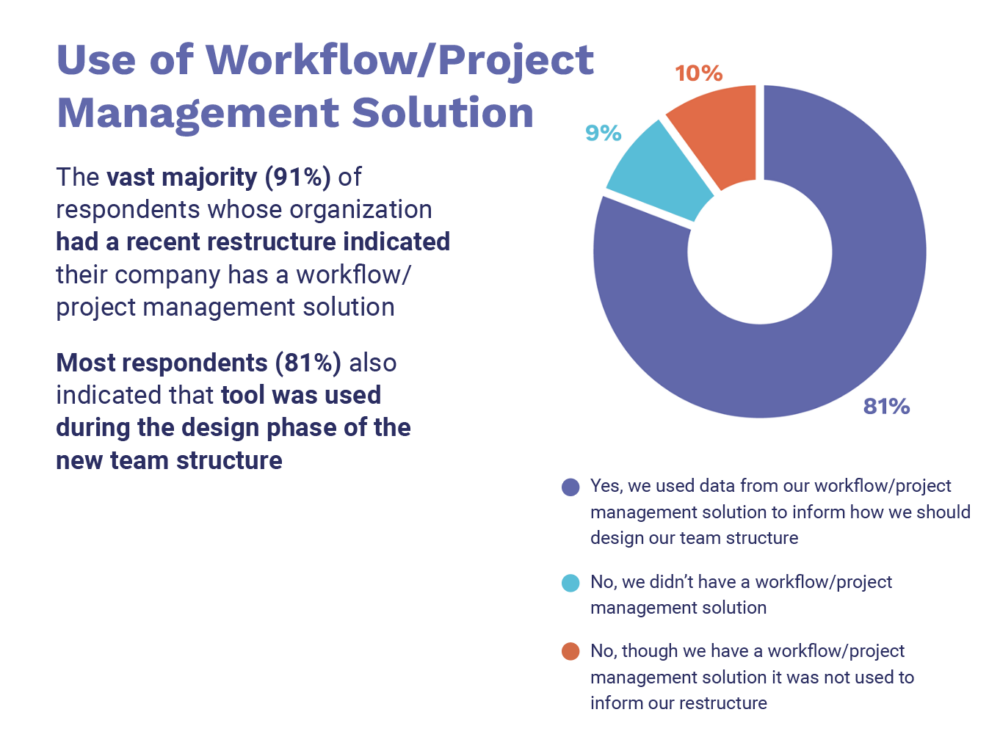
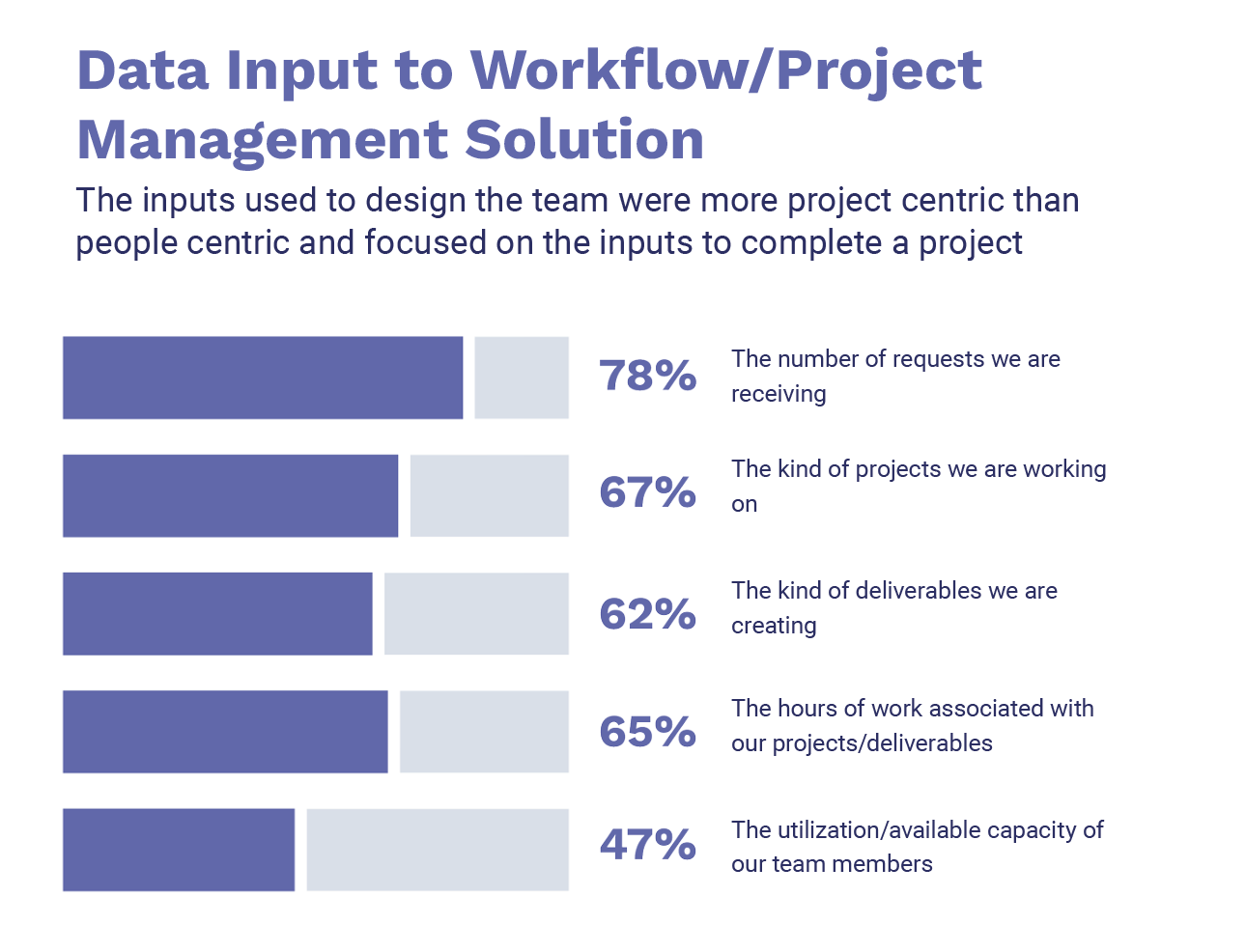
2022 Q3 Creative Operations Report: Drinking Their Own Champagne
The core problems Nathan set out to solve with the reorganization were familiar ones to many creative leaders. “Internal creative teams are typically challenged with not having as much time as they would like to do great work,” says Nathan, “along with not necessarily getting the greatest of briefs. So they’re not able to be creative, and not able to use the skills in which they’ve been trained to create the work.”
“I found the process I used when I was managing our commercial team worked very efficiently, but that was not a process that our internal team used. And it meant that the quality of work being delivered to stakeholders wasn’t necessarily as good as they would like.”
Nathan opened a conversation with incoming CMO Lindsey Tishgart. “She felt it would make more sense for her to have a service rather than for her to own it and have the team.” Nathan and Lindsey called it “Mediafly for Mediafly.”
Aligning On Content Outcomes
The core objective was to provide better service to stakeholders, but defining “better” was, in Nathan’s eyes, something to quantify. “It’s got to fundamentally help them achieve the objective of that asset,” explains Nathan. “The good thing is that our platform hosts the content, so when that content is shared by a salesperson, we have the insights.” That, along with integration with Salesforce, helps understand the ROI that the content is generating.
Aligning on the desired outcomes has created a virtuous circle, driving the right behavior from stakeholders. “They now really think about who the audience is, what’s the purpose of that piece of content,” observes Nathan. “What’s the message? Is there a range of personas to connect and engage with? We look at making sure there’s a cohesive story in the content development.” With more thought around these questions come better briefs. And better briefs deliver better outcomes, happier stakeholders, and business growth.
Overcoming Internal Fears
A change in process always brings concerns from stakeholders, and this process change was no exception. “Team members were afraid we’d lose velocity,” remembers Nathan. “The worry that things are going to take longer.”
However, he credits the Mediafly team and culture for making one of common concerns – “we’ve always done it this way” – not a concern. “We are growing and acquisitive, so the team has an open mind to change, and that has helped us roll this out in a positive way quickly.”
Advice for Others
When asked what guidance he’d give to others considering restructuring, Nathan is pragmatic, yet appeals to the idealism of the creative soul in selling the idea. “If creatives don’t feel that they’re empowered, that their skills aren’t being fully utilized, then that gives you opportunity for improvement.”
Stakeholders, of course, need to buy into the idea too. “I get a few influential stakeholders on board and say to them that we want to try to do even more for you,” he says. “Try and find a project you can do with the most senior person in your organization and show them what differentiation can really mean. Get them on your side, and they become your greatest advocate.”
To read Nathan’s full story, download the full report
Respondents’ Profile
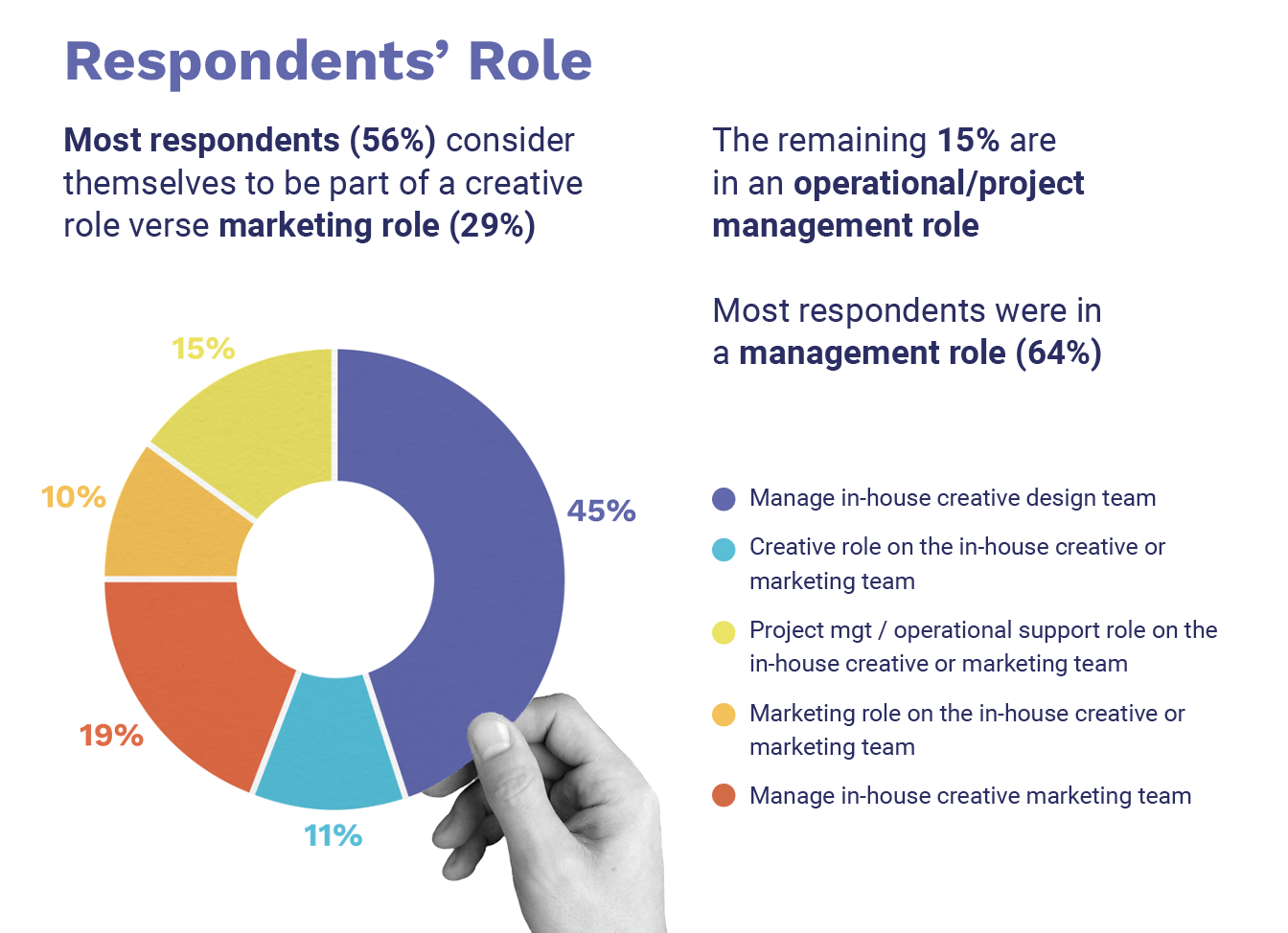
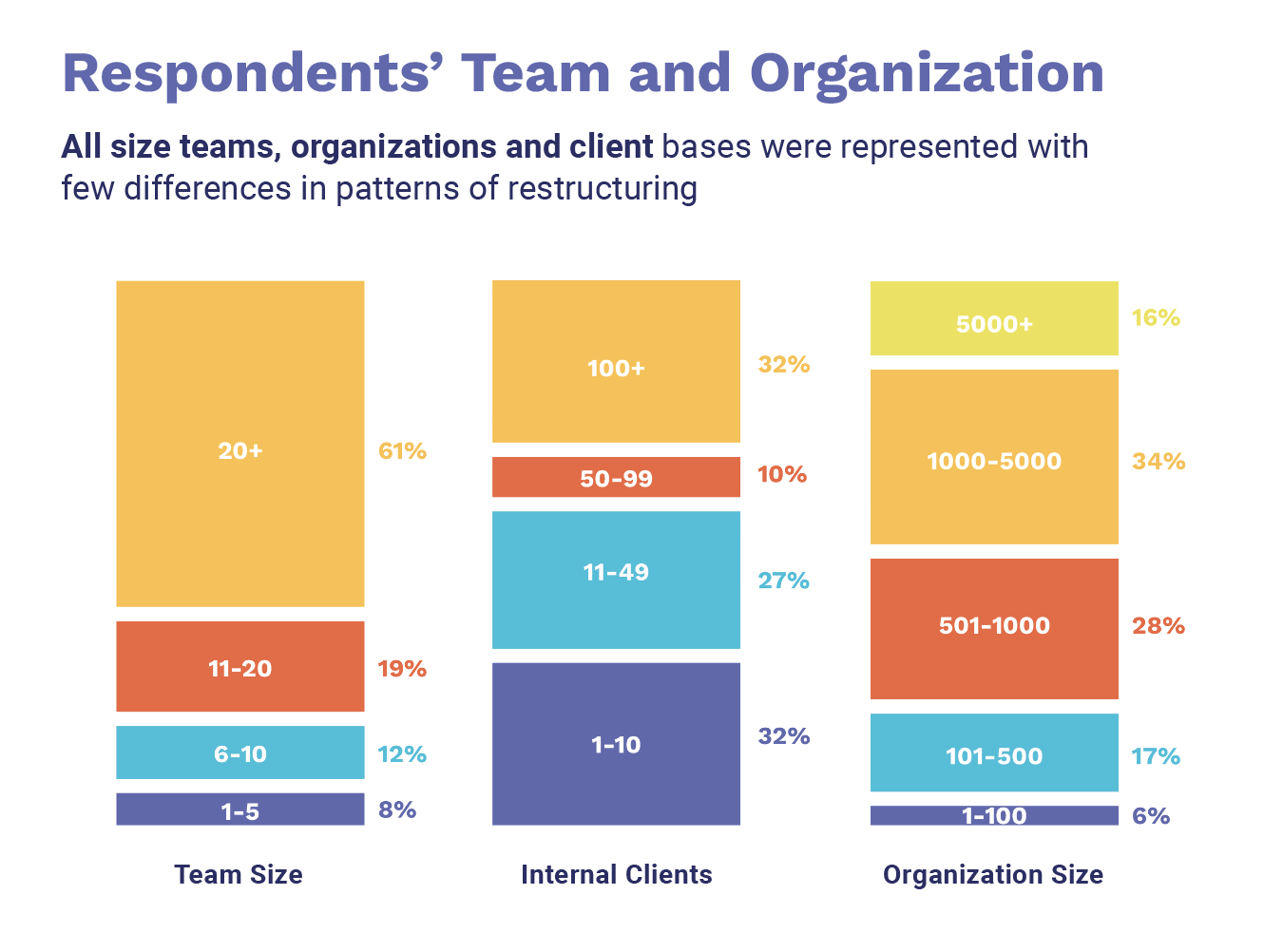
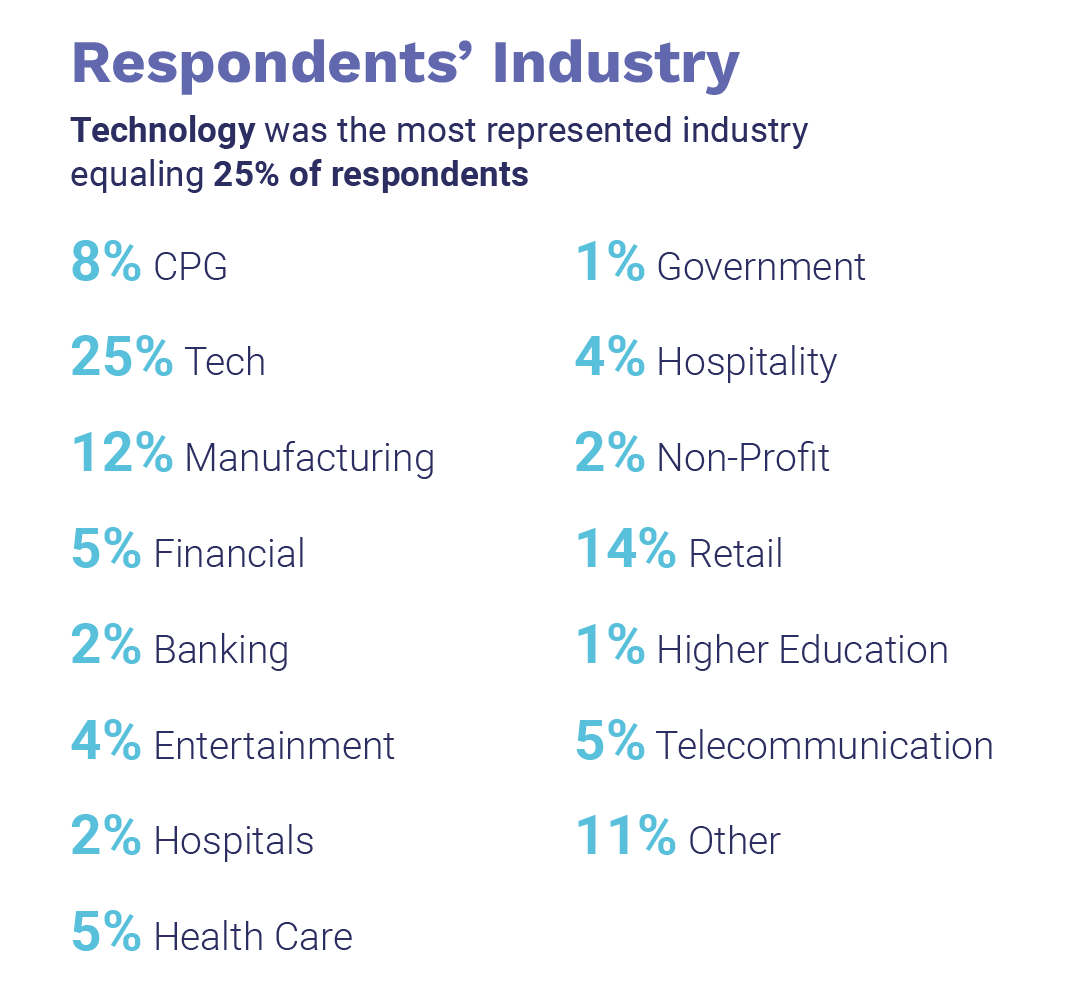
Step One: Reorganizing Asite’s Team for Role Clarity and Market Impact
As an incoming CMO, Kyle saw immediate opportunity to improve delivery by realigning the team. The existing team was fairly flat, all reporting into the Head of Marketing, and primarily focused on thought leadership and sales enablement deliverables.
There was a substantial amount of red tape and bureaucracy, so deliverables sat as work in progress, idle, waiting for approvals. Team members felt lost and disconnected from results. “For lack of better world”, says Kyle, “It was chaos.”
As Kyle revised the marketing organization, his core objective was to bring transparency to the process, so the team focused on two main areas.
- Kyle established a design team lead over all visual content, including graphic design, web, and video.
- Kyle appointed a content manager in charge of the written elements of content, charged with understanding and finessing the message of all content that would be distributed.
“The team responded really well to different structure, new management, getting their work seen like that,” notes Kyle. But the teams grow and situations change – and Kyle is relentlessly focused on optimizing for the next challenge ahead.
Step Two: Realigning for Strategic Focus
The team gained a lot of ground and more effective coordination within the first reorganization, but the team had grown becoming more global with members in Australia, Europe, and the US. Brand continuity was becoming an issue. The website and the product value were not well aligned, in part because the UI/UX team was not reporting in to or aligned with the marketing team.
Team members saw an opportunity for a further improvement. “People said that we had outgrown that structure, that we had achieved the objectives and reached a point where the structure was actually preventing us from that next step.”
Kyle set about working with the team to “realign” to realize further gains. In communication, he focused on a simple message: “this is about the roles and responsibilities in helping us achieve what we’re really setting out to do.”
The realignment kept many areas of the first reorganization, with Creative and Content as separate areas. But there were changes. A designer who’d taken lead on high-profile projects such as high-level brand work and board presentations was promoted into a Creative Director role. Similarly, the creative team lead was moved into an Art Director role.
Lessons Learned
Kyle advises to remember that organizations have a personnel makeup – almost a persona – in making organizations changes. “I might have made different decisions at the start,” says Kyle. “One of the most complex things when it comes to creatives is that they’re harder to lock down with numbers, and everything can become very subjective, so I try to move the conversation to something that’s objective.”
The other lesson was to begin with an open mind. Kyle’s seen many executives come in and make moves to what they considered the “right” organization structure – and found those moves resisted. He seeks first to understand the team and the rationale for the current structure.
“I usually walk in and have an idea of how I want to set it up,” notes Kyle. “But I also believe that making people feel rewarded is the number one job of an executive for a team.” He advocates starting with a clean sheet of paper, listening to the team and assessing the landscape, and making changes based on that assessment.
Do you want to give yourself and your creative team more room for creative stimulation by automating the boring stuff? Lytho helps you streamline your entire workflow and harmonize all brand collateral under a single, uniform platform. Feel free to reach out to us by scheduling a demo and learning how our creative solutions can boost the effectiveness of your creative projects. We look forward to speaking with you!

Ready to simplify your creative operations and start having a little fun at work again? Schedule time to talk with us.
Let us show you how Lytho’s Creative Operations Platform helps in-house creative and marketing teams do better work, ease the stakeholder experience, and stay on brand.
Schedule a Demo



